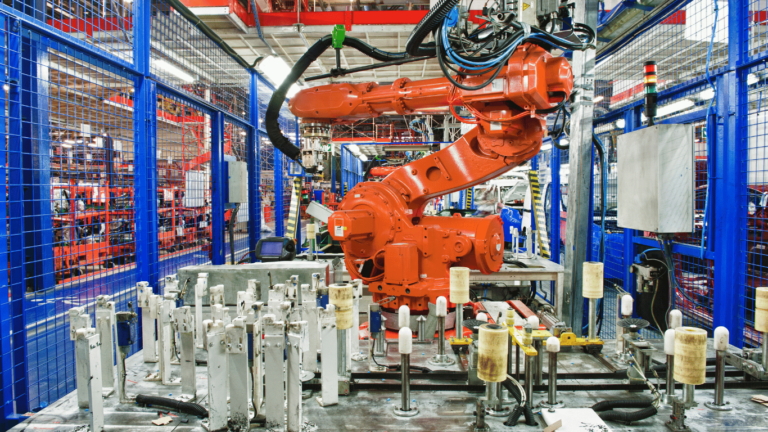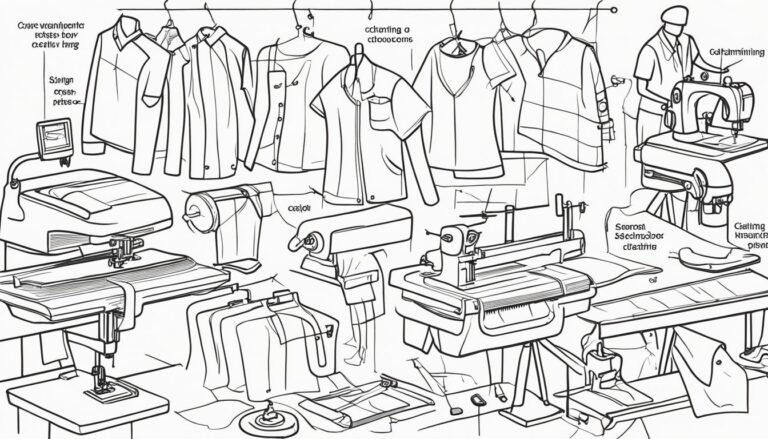Performance Management and Appraisal Systems in Manufacturing
Did you know that using connected worker technology can help monitor production in real-time? This leads to better efficiency and clear performance tracking. It’s now key in today’s manufacturing world. As manufacturing sectors go high-tech, making the workforce more efficient is crucial.
Setting up a strong performance management system helps meet these needs. It focuses on making the workforce more efficient and reaching company goals.
New tech in machines and automation highlights the need for better workforce management and talent growth. These tech advances gather important data. This data helps improve strategies to boost employee work and follow productivity goals.
By using AI-driven analytics, manufacturers can understand worker performance trends and find issues. This helps in making decisions based on data.
Key Takeaways
- Connected worker technology makes it easier to monitor production in real-time, boosting efficiency and transparency in tracking performance.
- AI-driven analytics offer insights into worker performance trends and issues.
- Regular feedback and reviews help employees grow and improve continuously.
- Linking performance management with Lean or Six Sigma optimizes processes and cuts waste.
- Continuous training boosts employee skills, innovation, and keeps talent in manufacturing.
- Digital tools make managing performance easier and give precise insights.
Introduction to Performance Management in Manufacturing
Performance management in manufacturing is key to achieving operational excellence. With automated production on the rise, having a clear system for evaluating employees is crucial. This system helps companies make decisions based on data.
Management by Objectives (MBO) is a model that links employee goals with company goals. However, it’s seen as too strict by some. On the other hand, SMART goals make sure targets are clear and achievable, helping everyone know what success looks like.
Good performance management programs align workers with the company’s mission and goals. For example, GE’s success was partly due to aligning employees with clear objectives. Using a balanced scorecard in manufacturing can also boost productivity by linking team goals with overall plant goals.
Culture plays a big role in how performance management works. In some Asian companies, setting high goals is hard because of the fear of not meeting them. It’s important to be open and honest in these systems to build trust and improve performance.
Regular, honest talks are key to good performance management. Tools like shift huddles and one-on-one sessions help keep the focus on performance. Rewarding good work and not just focusing on the bad encourages a positive work environment.
A recent Gallup survey showed that many workers don’t feel included in setting goals. Only 24% strongly agree with this. This shows there’s a big gap that can be improved with better, more inclusive ways of evaluating employees.
There’s also a big gap in promotions between men and women. For every 100 men promoted, only 87 women get promoted. This 13% gap shows the need for fair, data-driven decisions to reach true operational excellence.
Key Challenges in Implementing Performance Management Systems
The manufacturing industry faces many hurdles when trying to use performance management systems. These hurdles include low participation, the need to adapt during the pandemic, and not having enough data to act on.
Low Participation Rates
One big challenge is that not many people take part in these systems. In Dubai and the UAE, many companies struggle to make the most of them. This can slow down growth and even cost money.
Employees often see these systems as just more work with no real benefits. Also, not explaining well why they’re important makes things worse.
Pandemic-Driven Demands
The COVID-19 pandemic made things even harder for the manufacturing industry. Companies had to quickly adjust to supply chain issues and follow health rules like social distancing. This showed the need for flexible performance management systems to keep things running smoothly.
Many companies started using digital tools for managing performance. This helped them work better and cut down on mistakes.
Scarcity of Actionable Data
Not having enough useful data is a big problem for performance management in manufacturing. Old ways of giving feedback once a year aren’t enough. This makes the system less effective and hurts trust between workers and bosses.
It’s key to collect data often and give feedback regularly to keep employees engaged. Without good data, it’s hard to set goals that are realistic and achievable. This can lead to less motivation and lower productivity among employees.
Effective Strategies for Performance Management in Manufacturing
Managing performance well in manufacturing is key to reaching goals and boosting productivity. Important steps include setting clear goals, giving regular feedback, and promoting ongoing improvement.
Goal Setting and Alignment
Clear goals make teams work better together, improve communication, and boost accountability. When goals are clear, workers know what to do, making them more engaged and productive. Managers must clearly share these goals with everyone to keep everyone aligned.
Regular Feedback Mechanisms
Keeping a team motivated needs regular feedback. Feedback in performance reviews should be ongoing, not just once a year. Open talks between bosses and workers let feedback flow freely, making decisions better and boosting productivity. Regular feedback helps track progress, spot areas to get better, and encourages team competition.
Encouraging Continuous Improvement
Staying ahead in manufacturing means always getting better. Offering training helps workers grow and stay interested. Pushing for constant improvement fits with review systems and keeps workers aiming to do their best. This helps tackle issues like not having enough workers and supply chain problems.
| Strategy | Benefits |
|---|---|
| Goal Setting and Alignment | Improves teamwork, communication, accountability, and employee engagement |
| Regular Feedback Mechanisms | Measures productivity, identifies improvement areas, fosters healthy competition |
| Encouraging Continuous Improvement | Boosts skillsets, increases engagement, aligns with performance management |
Using these strategies, manufacturing firms can set up strong performance management systems. These systems boost productivity, meet market needs, and tackle operational hurdles.
Performance Management and Appraisal Systems in Manufacturing
In the fast-changing world of manufacturing, combining lean manufacturing with strong performance management systems is key. These systems cut waste and boost efficiency. They focus on manufacturing KPIs to check how well employees do and the quality of their work.
According to a recent McKinsey report, real-time performance visibility, daily performance planning, and end-to-end accountability are essential for thriving manufacturing operations.
Leaders in the industry say that being cost-competitive is a big factor in change. A good performance management system can boost productivity by 30-50% in just 8-12 weeks. It also leads to better on-time deliveries and more capacity.
For example, AssessTEAM lets you set up custom evaluation times and sends out reminders for reviews. It tracks thousands of employees with different KPIs. eloomi also gives a full view of how employees are doing and their progress all year.
Key Benefits of Performance Management Systems in Manufacturing:
- Enhanced employee morale through clear, timely feedback.
- Higher levels of accountability and alignment with organizational goals.
- Improved decision-making capabilities based on accurate performance trends.
- Direct correlation to higher productivity and on-time project completion.
| Factor | Impact |
|---|---|
| Lean Manufacturing | Reduction in waste and operational costs |
| Manufacturing KPIs | Accurate measurement of output and productivity |
| Performance Management Benefits | Higher employee morale, effective feedback, improved decision-making |
| Implementation Time | 8-12 weeks for productivity improvements |
| Real-Time Performance Visibility | Essential for daily performance planning and accountability |
Studies show that 57% of manufacturing workers leave because they feel disrespected. Good appraisal systems help by creating a respectful workplace. Even though they take time, with managers spending about 210 hours a year, they bring big benefits over time.
Conclusion
The manufacturing sector faces unique challenges that highlight the need for strong performance management and appraisal systems. These systems are key to building a culture focused on performance. They help align employee goals with business aims, making the workforce more engaged and improving overall performance.
Studies show that good performance management boosts employee engagement and helps with strategic workforce planning. For example, companies with strong systems do 60% better than their competitors. When goals match business priorities, 46% of people say performance management works well, compared to 16% without alignment.
Talent development is vital for a strong and flexible workforce. Companies that offer regular coaching and feedback do well in developing their employees. This leads to happier employees who are less likely to leave. Good communication in teams can also boost productivity by up to 25%.
In the end, building a culture focused on performance is key to lasting manufacturing success. It helps companies stay strong against market changes.
Source Links
- Performance Management in Manufacturing: Best Practices and Examples – Augmentir
- Performance Management in Manufacturing: 10 Strategies to Fuel Success
- Performance Management: Definition, Purpose, Steps & Benefits
- Performance management: Why keeping score is so important, and so hard
- 5 Challenges in implementing Performance Management System
- Key Success Factors & Challenges of Implementing Performance Management Systems in Organizations
- Challenges And Solutions Of Implementing Performance Management In Organisation – PASONA India Private Limited
- Performance Appraisal System in Manufacturing Sector and Benefits
- No title found
- Performance Appraisal in Manufacturing Industries – Challenges & Solutions
- Performance Management vs. Performance Appraisals: What Are the Differences?
- Performance Management Vs Performance Appraisal | Difference between Performance Management and Performance Appraisal
- Performance Management Vs. Performance Appraisal
- 8 Findings and Conclusions | Pay for Performance: Evaluating Performance Appraisal and Merit Pay







